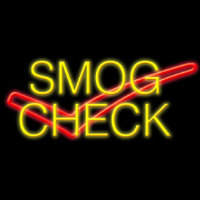UC Researcher Says 10% of San Joaquin Valley Smog Is from Asia

Californians don’t have to travel across the ocean to experience the wonder of filthy Asian air, reminiscent of the smog that blanketed the state before the U.S. Clean Air Act.
They can go to the San Joaquin Valley, where researchers at the University of California, Davis, have determined that 10% of the ozone pollution is “secondhand smog” from Asia. That percentage would be a lot higher if the region weren’t already one of the nation’s most polluted areas.
The finding is significant for a number of reasons, not the least of which is that California was fined by the U.S. Environmental Protection Agency (EPA) in 2012 for exceeding smog limitations two years earlier. More than $100 million has been collected.
The San Joaquin Valley Air Pollution Control District began funding the work of UC Davis Professor Ian Faloona in 2011 to measure what had previously been insignificant levels of imported Asian smog. He presented his preliminary findings at the Transboundary Ozone Pollution Conference at the Tenaya Lodge in Yosemite.
“Traditionally, air pollution has always been considered an issue to be handled locally, ‘It’s your backyard, it’s your problem,’ Faloona said in a release. “But we’re going to have to treat air pollution to some extent how we treat greenhouse gases.”
Only better, it is hoped.
Scientists have been trying for years to develop computer models for assessing the amount of Asian smog that blows into California but have not been successful. Faloona and UC Davis scientists took a different tack. They have been measuring ozone since 2011 from Chews Ridge in the Santa Lucia Mountains north of Monterey, where the air should be pretty pristine, and from airplanes.
Tony Barboza of the Los Angeles Times visited Faloona on Chews Ridge back in January, where he was told, “People think of these pollutants as relatively short-lived and think they don't make it that far. But we've realized it's all connected.”
Faloona said that his measurements, taken thousands of feet above ground level, were picking up ozone concentrations as high as 80 parts per billion (ppb), which eventually sink lower as they head for Bakersfield and Fresno.
That’s a higher pollution level than the present legal limit of 75 ppb. The EPA is recommending that the standard be dropped to 65 or 70 ppb. In the meantime, the air pollution agency broke new ground when it asked the EPA to give it an exemption from the standards because of outside influences beyond their control.
The Transboundary conference is run by NASA’s Air Quality Applied Science Team (AQAST) and the air pollution agency. The latter does not have the full faith and support of local health advocates, some of whom feel that the agency should be focused on the 90% of pollution it can influence.
“The air district is famous for looking for loopholes,” Central Valley Air Quality Coalition Director Delores Weller told KQED. “It would be great to see an agriculture, farming operations and air pollution conference based here in the Valley as opposed to a trans-boundary ozone conference.”
–Ken Broder
To Learn More:
California Getting “Second-Hand Smog” from Asia, Researchers Say (by Sharon Bernstein, Reuters)
Is Pollution from Asia Making the Central Valley’s Bad Air Even Worse? (by Alice Daniel, KQED)
Just How Much Is Asia's Ozone to Blame for Bad Air in the U.S.? (by Tony Barboza, Los Angeles Times)
Secondhand Smog: Scientists Determine Amount of Ozone Pollution Drifting to California From Overseas (UC Davis)
- Top Stories
- Controversies
- Where is the Money Going?
- California and the Nation
- Appointments and Resignations
- Unusual News
- Latest News
- California Forbids U.S. Immigration Agents from Pretending to be Police
- California Lawmakers Urged to Strip “Self-Dealing” Tax Board of Its Duties
- Big Oil’s Grip on California
- Santa Cruz Police See Homeland Security Betrayal in Use of Gang Roundup as Cover for Immigration Raid
- Oil Companies Face Deadline to Stop Polluting California Groundwater





